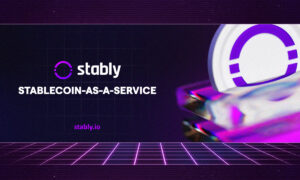Fintech isn’t perfect. One of the biggest skills that any leader in the B2B payments and challenger banking space can possess is the ability to analyse trade-offs within the business, and then prioritise which direction is best to take. It’s not easy – there’s always the temptation (particularly in early-stage startups) to try and do everything, and do everything right. At Integrated Finance, we’ve been in the trenches with fintechs of all shapes and sizes – from early-stage startups to large enterprises. This experience has sharpened our insight into three fundamental aspects dictating these crucial trade-offs: revenue, risk, and resource allocation. Below, we’ll dive into the nuances of these key drivers in fintech. Stay tuned, because in part two, we’re going to zoom in on how these factors play out across the spectrum of business sizes, and offer some actionable advice to business leaders in those spaces.
How do we define and categorise risks in fintech?
If you’re in the world of B2B payments or challenger banks, the risks are multifaceted. These range from regulatory compliance, market volatility, technological disruptions, to competitive pressures. A misstep in managing these risks can lead to significant setbacks. However, when expertly managed, these can form the backbone of sustainable growth and competitiveness in any business.
Revenue and the art of unit economics
The journey towards robust revenue generation begins with an in-depth understanding of your customers and the markets you operate in. This isn’t just about gathering data; it’s about weaving that data into a goldmine of insights, shaping strategies that really resonate with customer needs and the ever-shifting market landscape. It’s about finding those sweet spots where your business’s strengths meet market opportunities.
This alignment is not a static process; it evolves as the market changes and as the business grows. You also need to get to grips with the provider ecosystem. Think of this as the bustling marketplace of all the various companies and services that support your business – from software providers to payment processors, and beyond. Understanding this network allows you to see beyond your immediate business and dive into the wealth of services, technologies, and partnerships that can amplify your revenue streams. When you tap into this ecosystem effectively, you’re not just adding new revenue channels; you’re reinforcing and enriching the ones you already have. That’s how you expand your economic landscape and solidify your market stronghold.
Risk Management: navigating acceptance rates
Managing risks, especially when it comes to acceptance rates, is a bit like walking a tightrope. It’s all about striking that perfect balance. On one side, you’ve got the exciting challenge of bringing in new customers, and on the other, the essential need to keep risks in check. It’s a challenge to grow your customer base while ensuring you’re not stretching your business too thin.
At the heart of this balancing act is the integration of customer acquisition with effective risk mitigation. It’s not just about following the rules; it’s about really understanding them – knowing where and how to apply compliance and risk management in a way that positively impacts your business and your relationships with customers.
Here’s a little secret from our playbook: risk doesn’t always have to be the bad guy. In fact, with a bit of creativity, what looks like a risk can actually turn into an exciting opportunity. Take premium services, for example — by tailoring them to address specific risks, we not only safeguard our business but also tap into a fresh revenue stream. It’s these kinds of innovative strategies that can keep you ahead in the game.
Mastering ease of ownership through resource allocation
In the world of resource management, it’s not just about being frugal with your development costs – it’s about being smart. Think of it like a chef in a gourmet kitchen. It’s not just about minimising the grocery bill; it’s about whipping up a Michelin-star-worthy dish without splurging on extravagant ingredients. That’s the kind of efficiency we’re talking about – the kind that keeps you sharp and competitive in the market.
Now, let’s chat about time-to-market; this is a race where timing is everything. You’ve got to balance your resources just right to cross that finish line with your product or service. If you’re too slow, you might just miss that golden window of opportunity, or worse, watch your competitors zoom past you.
Here’s a neat trick in the resource management playbook – turning those fixed costs into variable ones. Imagine having the ability to flex and bend with the market’s twists and turns. That’s what switching from fixed to variable costs can do, giving your business the agility to adapt swiftly to new challenges and opportunities as they come your way
Stay tuned for part two, where I’ll discuss how to identify trade-offs based on the size and maturity of your fintech, and offer actionable advice on how to navigate these…


































